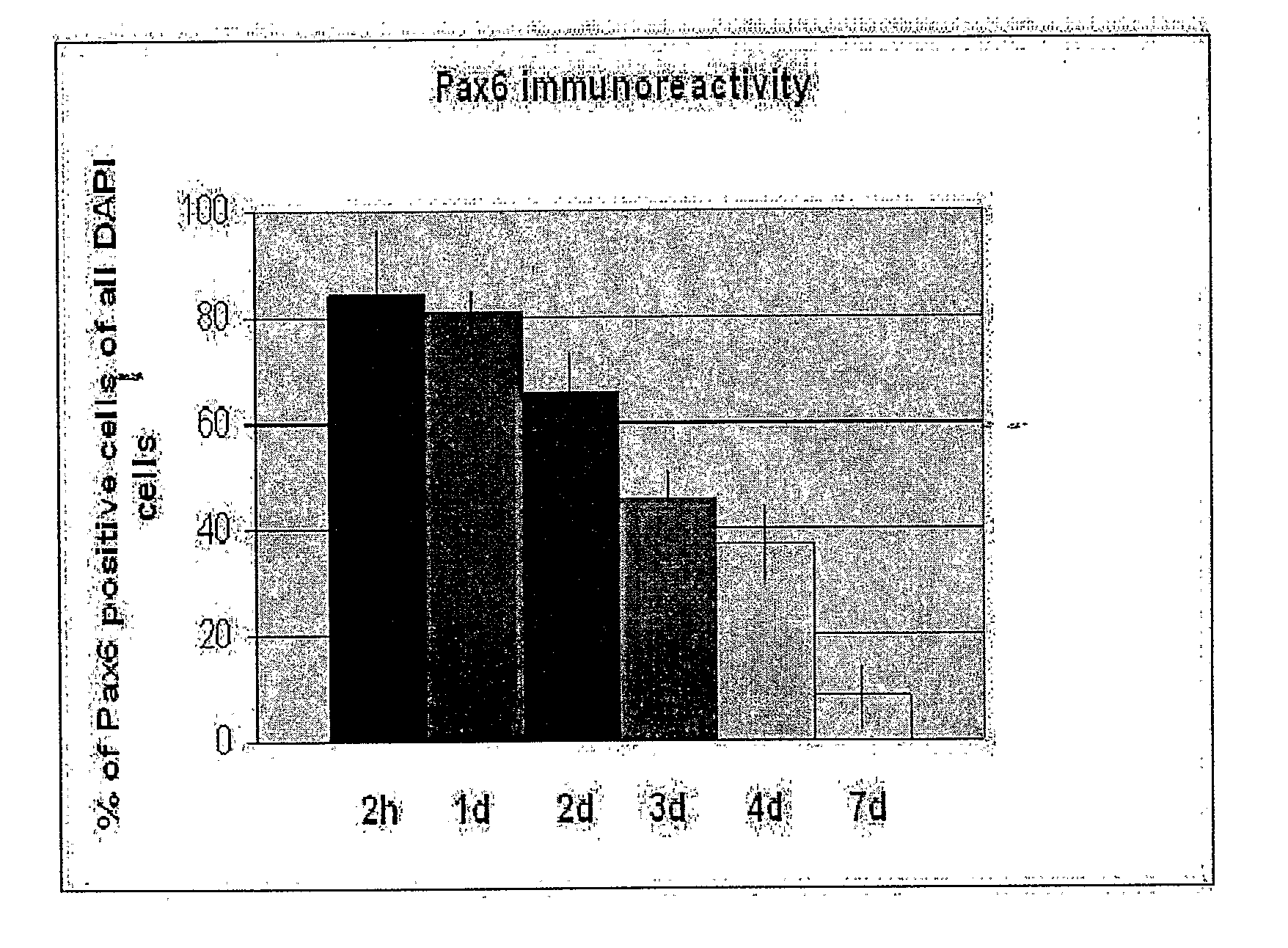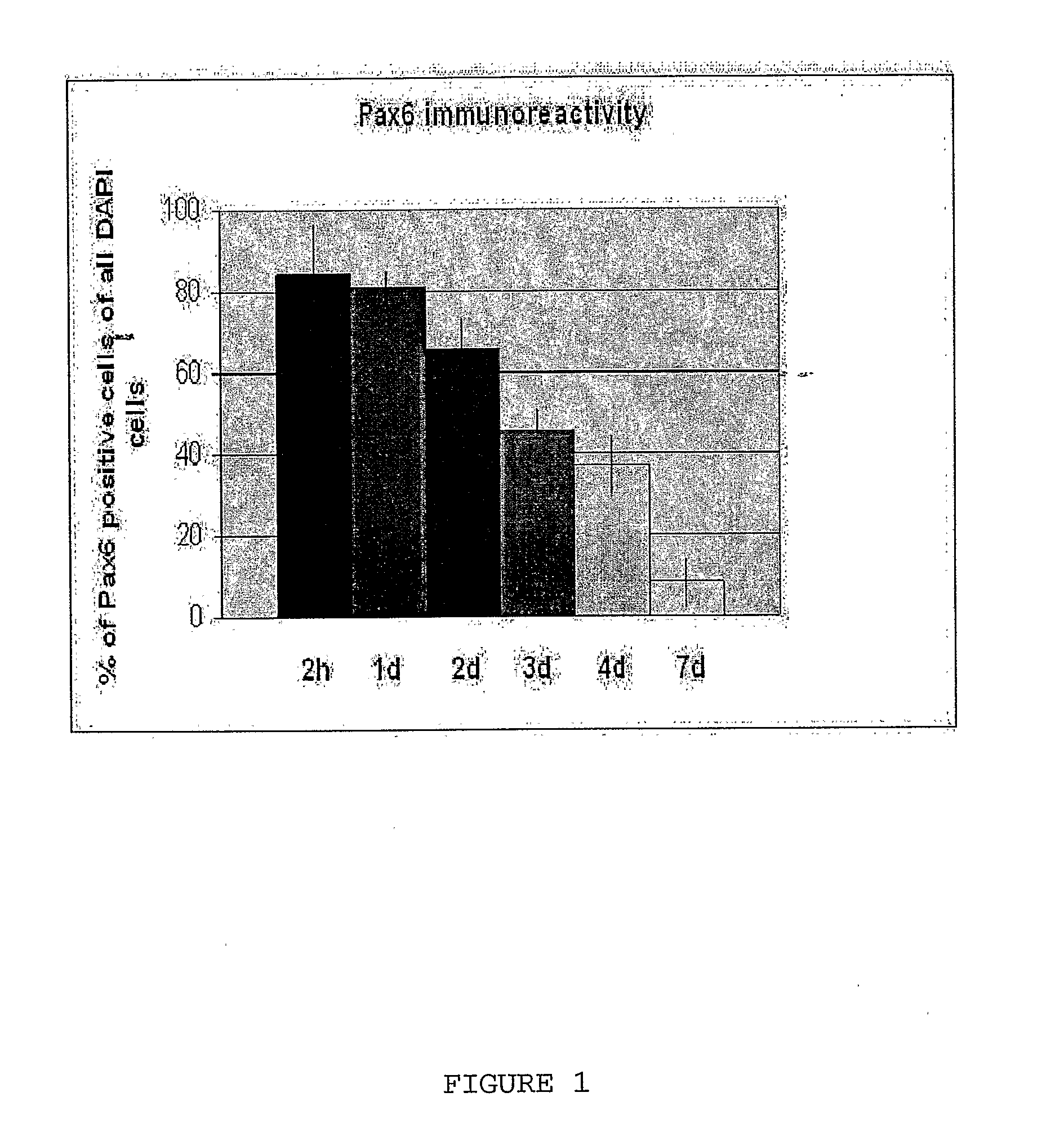Neural Cell Differentiation Method From Es Cells
a neural cell and differentiation method technology, applied in the field of es cells, can solve the problems of cellular heterogeneity, hindering other applications, and often non-reproducible nature, and achieve the effects of easy genetic manipulation, convenient genetic manipulation or isolation, and convenient genetic manipulation
- Summary
- Abstract
- Description
- Claims
- Application Information
AI Technical Summary
Benefits of technology
Problems solved by technology
Method used
Image
Examples
examples
Culture of ES Cells
[0195]The procedure leading to the generation of neurons from ES cells involved the following steps, summarised as follows:
1. Cells cultured on a feeder layer grow as colonies while after feeder-deprivation they grow as a flat monolayer.
2. ES cells on non-adherent bacterial dishes form cellular aggregates (EBs) that grow in suspension.
3. After 4 days of EB formation, RA was added for another 4 days.
5. EBs were dissociated after a total of 8 days and plated onto PDL / laminin-coated dishes in N2 medium.
6. N2 medium was changed after 2 h and again after 12-24 h. At this stage most precursor cells have a spindle-shape morphology. The neuronal differentiation medium is added after 30-48 h.
[0196]This procedure was developed using ES cells expressing GFP from the tau locus (ref. 13). Expression of GFP from an endogenous promoter allowed visualisation of neurons and of their processes under UV light, and we used it to maximise the generation of fluorescent cells.
[0197]Afte...
PUM
 Login to View More
Login to View More Abstract
Description
Claims
Application Information
 Login to View More
Login to View More - R&D
- Intellectual Property
- Life Sciences
- Materials
- Tech Scout
- Unparalleled Data Quality
- Higher Quality Content
- 60% Fewer Hallucinations
Browse by: Latest US Patents, China's latest patents, Technical Efficacy Thesaurus, Application Domain, Technology Topic, Popular Technical Reports.
© 2025 PatSnap. All rights reserved.Legal|Privacy policy|Modern Slavery Act Transparency Statement|Sitemap|About US| Contact US: help@patsnap.com


